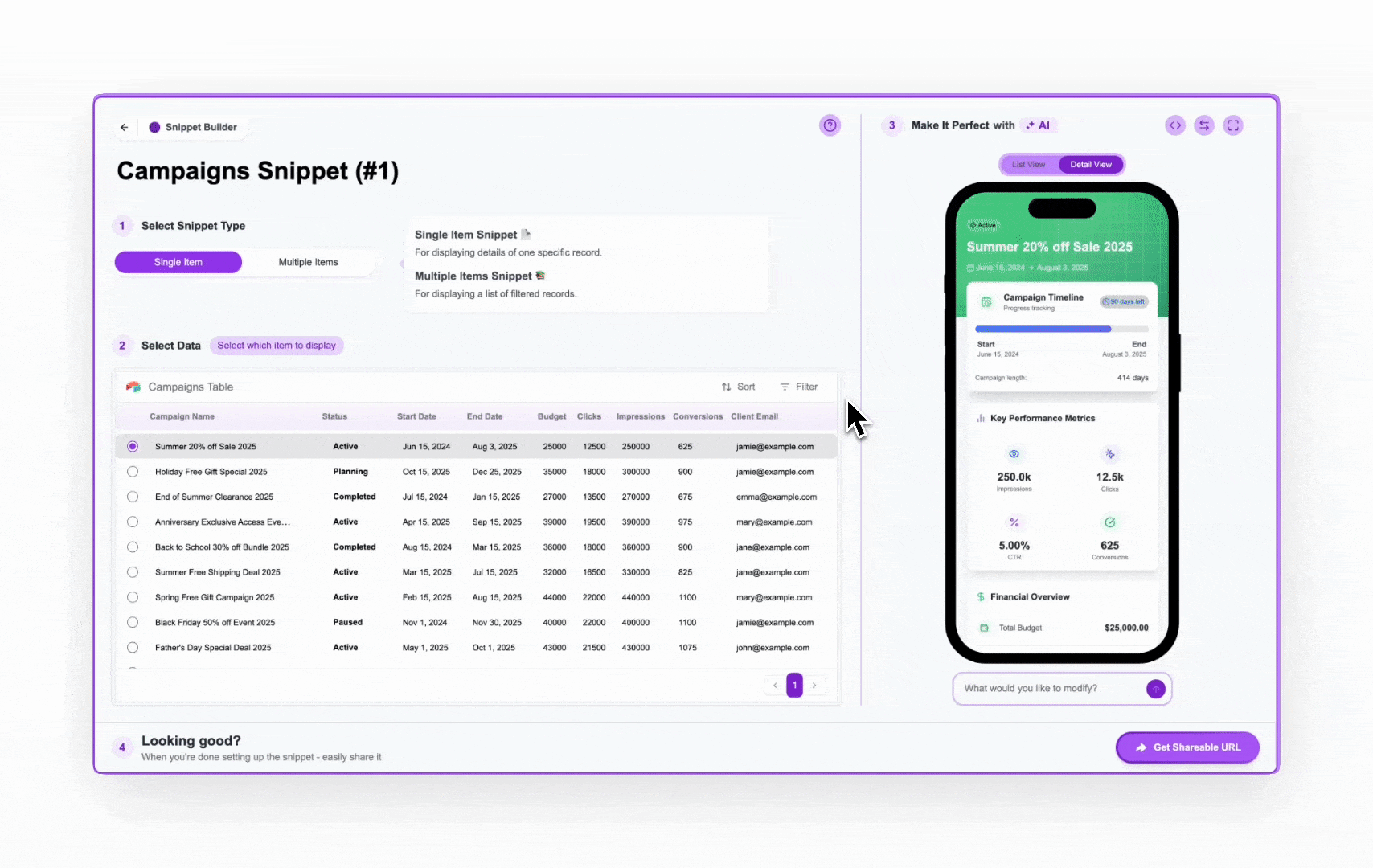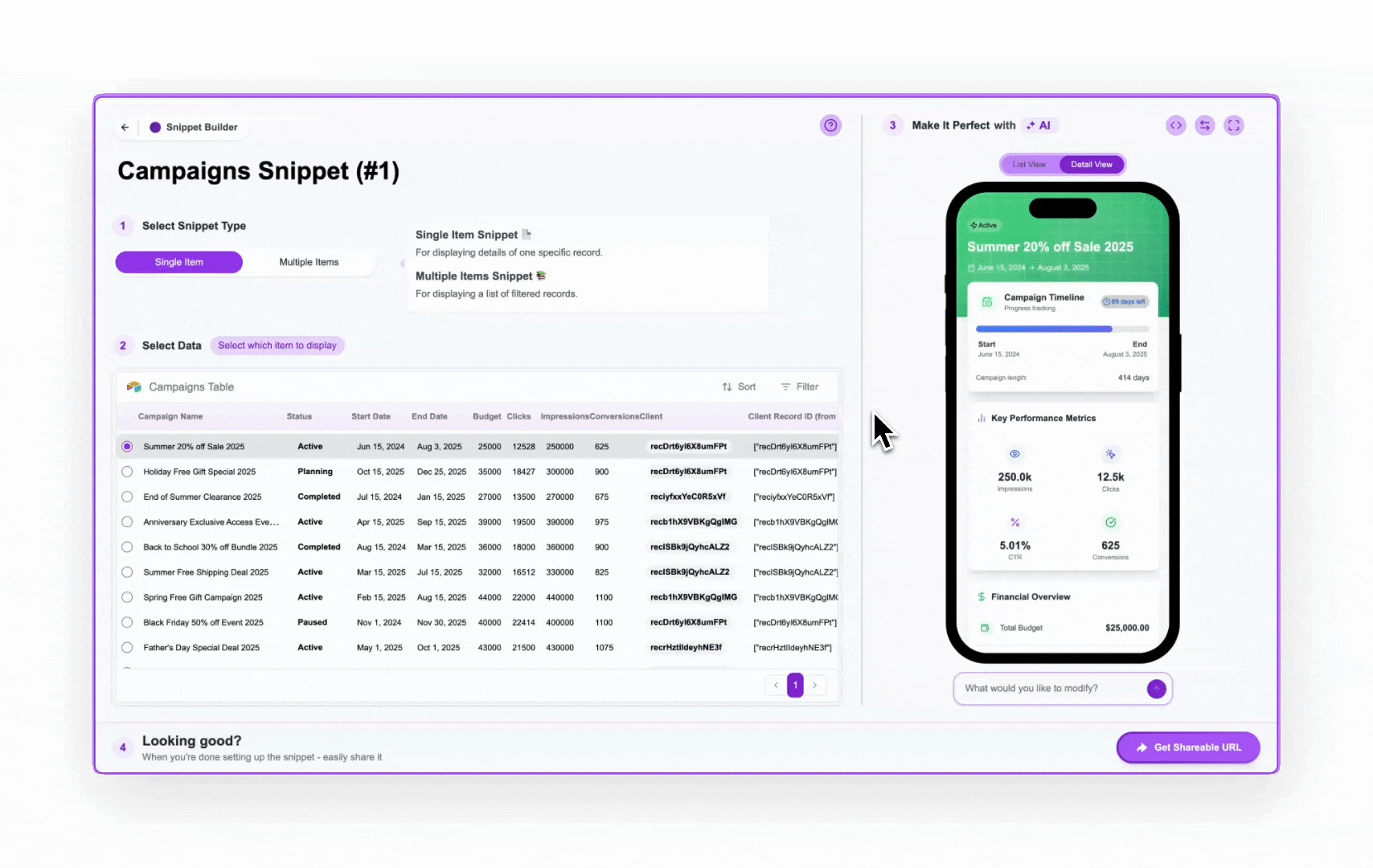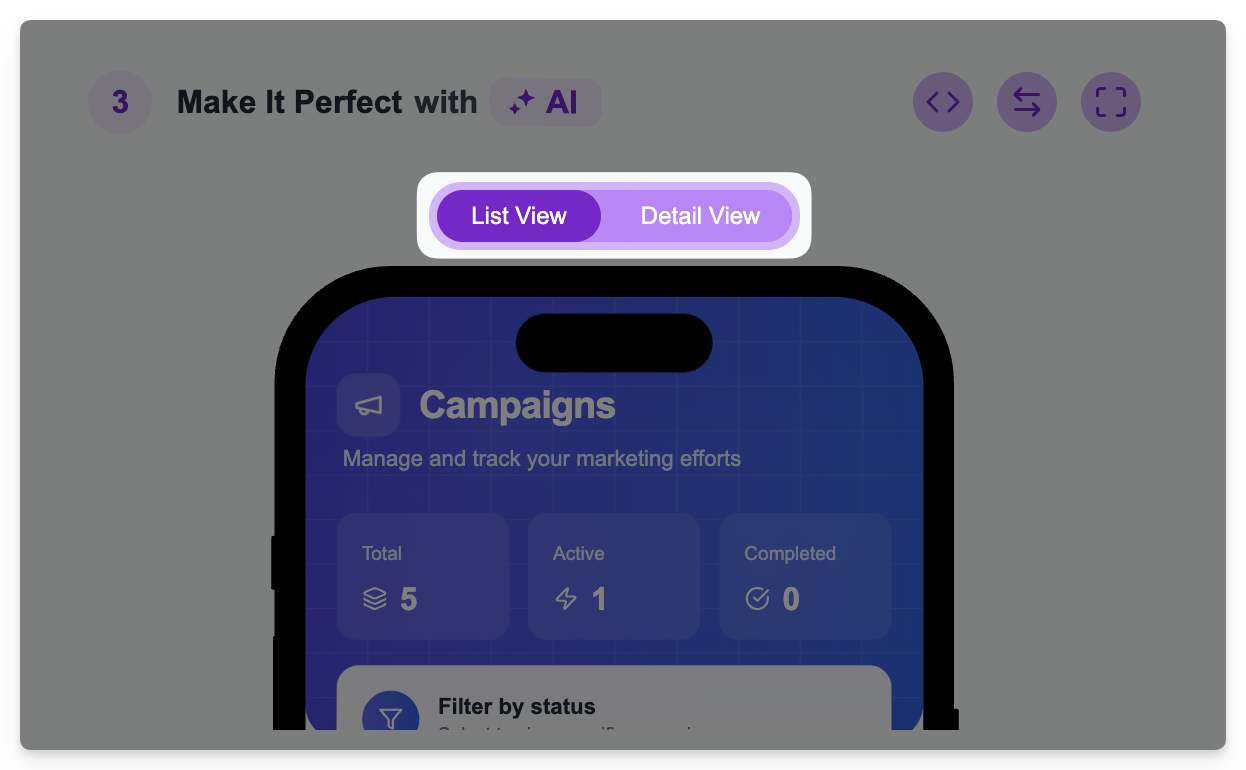Designing with Natural Language: The AI Prompt
The primary method for customizing the design and layout of your snippet is through simple, natural language instructions using the AI Prompt. You’ll find this prompt input field in Step 3 (“Make It Perfect”) of the Snippet Builder, located directly below the live phone preview.
What Can You Customize via Prompt?
The AI prompt is powerful and can handle a wide range of requests related to the snippet’s appearance and user interaction:Visual Styling
Change colors, texts, sizes, spacing, borders, backgrounds, icons, etc. Example Prompts:Showing/Hiding Fields
Control which fields from your table are visible within the snippet. Example Prompts:Incorporating Schema Changes
If you add a new field to your table after initially creating the snippet, you can instruct the prompt to include it in the display. (Remember to potentially refresh the builder page or schema first so Crust AI recognizes the new field). Example Prompts:Layout Adjustments
Change how elements or records are arranged. Example Prompts:Conditional Rendering & Styling
Apply specific styles or show/hide elements based on the data within a record. Crust AI understands your data structure and can apply logic. Example Prompts:Adding Interactive Elements
Instruct the AI to add buttons, checkboxes, dropdowns, or other elements that allow users to interact with the data (e.g., update fields).Learn more: Adding Interactive Elements to Update Data Example Prompts:

Tips for Effective Prompting
- Be Specific: Clearly state what element you want to change and how you want to change it. Instead of “Make it look better,” try “Increase the spacing around the client name.”
- Use Accurate Field Names: Refer to your data table fields by their exact names for the AI to understand correctly (e.g., use
'Client Email'not just'email'). - One Change at a Time: For complex modifications, it’s often better to break down your request into smaller, sequential prompts rather than one very long instruction. Apply one change, check the preview, then apply the next.
Important: Apply Prompts to the Correct View

Important: Prompt Limitations
Think of the prompt as your way to style and arrange the data after it has been selected and filtered according to the rules set in Step 2.By leveraging the AI prompt effectively, you can transform the default snippet layout into a highly customized and professional-looking mini-application tailored to your specific needs and branding.
